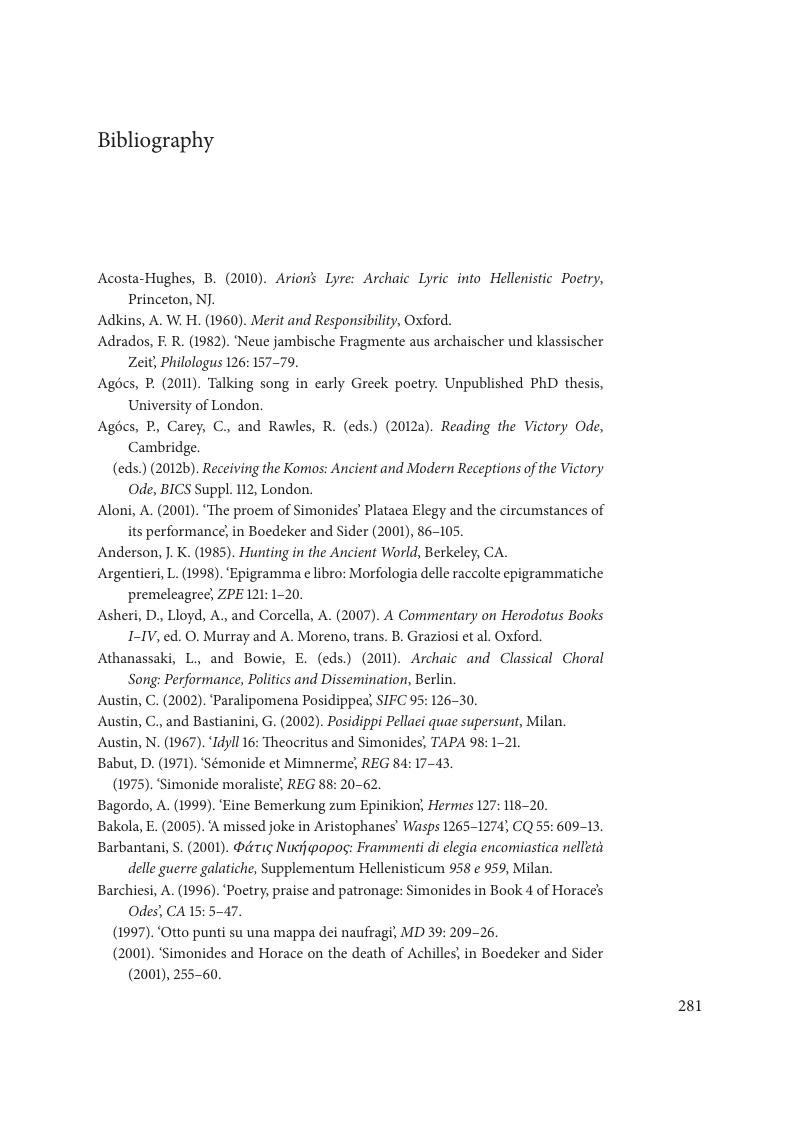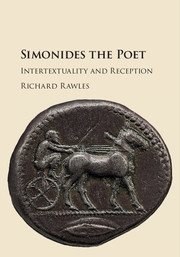Book contents
- Simonides the Poet
- Simonides the Poet
- Copyright page
- Dedication
- Contents
- Preface
- Introduction
- Part I Simonides and the Poets of the Past
- Part II Simonidea: Simonides through Ancient Receptions
- Appendix: Simonides’ Poems Concerning Battles of the Persian Wars
- Bibliography
- Index of Subjects
- Index of Passages Discussed
- References
Bibliography
Published online by Cambridge University Press: 29 March 2018
- Simonides the Poet
- Simonides the Poet
- Copyright page
- Dedication
- Contents
- Preface
- Introduction
- Part I Simonides and the Poets of the Past
- Part II Simonidea: Simonides through Ancient Receptions
- Appendix: Simonides’ Poems Concerning Battles of the Persian Wars
- Bibliography
- Index of Subjects
- Index of Passages Discussed
- References
Summary

- Type
- Chapter
- Information
- Simonides the PoetIntertextuality and Reception, pp. 281 - 299Publisher: Cambridge University PressPrint publication year: 2018



